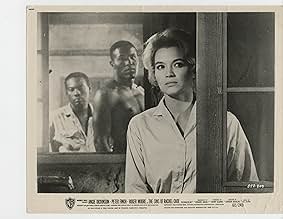Tolerable romantic/exotic/religious melodrama from producer Henry Blanke, who had earlier been responsible for the more acclaimed THE NUN'S STORY and the more popular THE MIRACLE (both 1959). As a matter of fact, this basically extends the African scenes of the former's second half to take up its entire length but, at the same time, incorporating the emotional/vocational struggle inherent in the latter and, for good measure, the male stars of each (Peter Finch and Roger Moore respectively) were brought on board for this new venture as well! Anyway, the titular figure is played, quite convincingly, by Angie Dickinson; as for her co-stars, Finch is typically commanding but one has a hard time believing Moore as either a flyer (the setting the eve of WWII) or a doctor (and it is clear he did not take the part seriously himself)! The most prominent among the indigenous community are 'holy man' Juano Hernandez (who holds his own against Finch in the acting stakes) and 'medicine man' Woody Strode (whose contribution is, alas, rather limited). The narrative takes a thoroughly predictable but pleasing route with earnest (and luscious) Dickinson having as hard a time convincing agnostic Governor Finch of the true faith as the superstitious natives
but the 'miracle' finally occurs when she cures a local boy, whom Hernandez and Strode had already given up for dead because his father had dared defy the gods! Similarly, when Moore's dashing but uncommitted character turns up in the second half, conflict naturally arises between him and Finch over the heroine (since both have no qualms about showing their feelings to the missionary girl)! The denouement, then, is as unlikely (with spiritual grace taking the upper hand over basic human fulfillment) as it is melodramatic, but that's Hollywood for you. While unsurprisingly meandering somewhat over the course of its generous two-hour length, the film emerges a good-looking and mildly enjoyable effort very typical of the time also marked by a lush score courtesy of veteran Max Steiner (that is perhaps exceedingly reminiscent of his Oscar-winning theme from NOW, VOYAGER [1942]!). Incidentally, while the full title of this one smacks of exploitation which is barely present in the film proper, the print shown on TCM UK actually dropped the heroine's foibles and left us with just her name an alternate moniker under which, however, it seems never to have been shown until now!



















